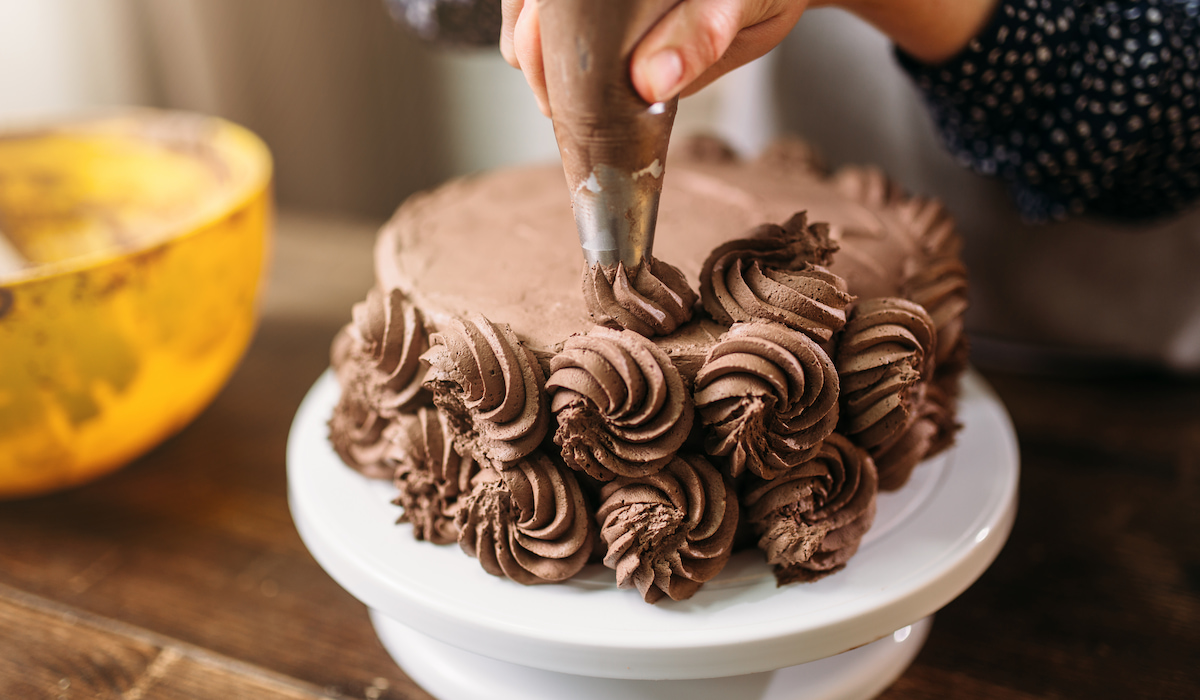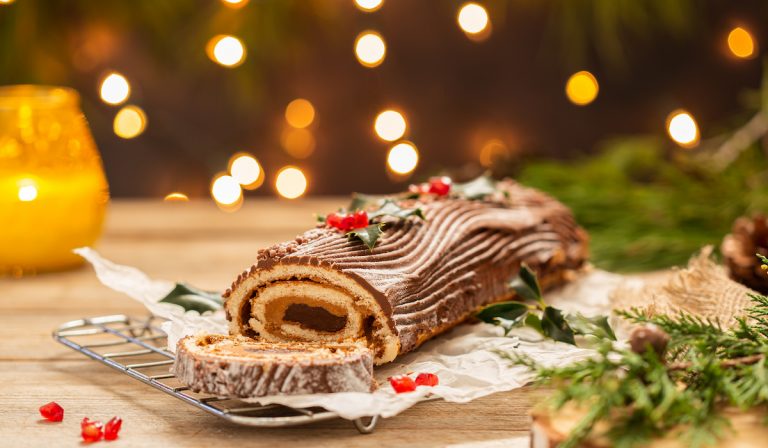History And Evolution Of Cake
If you have a sweet tooth, chances are, a cake is one of your favorite go-to foods. Whether it’s for grand ceremonies, birthday celebrations, or even just occasional evening bites, cakes will always have a place in everyone’s heart and tummy.
Not to mention, some people also don’t mind splurging for high-end cakes baked by top-notch bakers and cake decorators.
This is because as delicious as they get, cakes are able to bond people and invoke precious memories that can’t be exchanged by money. But these sweet baked foods possess their own history.
Here is how cakes made their way into our modern days.

A Brief History Of Cake
The word ‘cake’ has its origin from the Viking era, where it derived from the Old Norse word ‘kaka’. The ancient Greeks had two different names for cake.
One is ‘plakous’, which meant ‘flat cake’ and another is “satura” which meant “flat heavy cake’. Then, in the Roman era, they had another different name which was ‘placenta’, to refer to cakes with a pastry base.
Archaeologists found the earliest samples of cakes among the remains of Neolithic villages. These cakes were made from crushed grains before being moistened, compacted, and heated on hot stones.
These early cakes might resemble what we called today oatcakes, biscuits, or cookies.
The Egyptians were the first to show advanced baking skills when they baked honey-sweetened cakes. But back then, cakes were more bread-like without topping and icing.
The ancient Romans also started baking cakes with basic dough mixed with eggs, butter, and honey.
Throughout history, the evolution cakes can be divided into 3 timelines:
17th Century
In the mid 17th century, Europeans began to design the very first cake that became the model of all modern cakes and they baked round cakes with icing.
This very first icing was made by boiling different ingredients including fine sugar, egg whites, and flavoring.
The advancement of cooking and baking technology played a big role for Europeans to cook more intricate and different types of cakes.
But still, these cakes didn’t come with fancy stuffing other than a simple ingredient like dried fruits.
18th Century
In the 18th century, cake-baking became popular as a result of culinary schools that taught more people how to make pastries.
As sugar and refined flour became more cheap and accessible to anyone, people started to see that cakes weren’t just for noble and upper-class citizens.
Also, the Industrial Revolution became a catalyst for the production of semi-closed ovens.
One of the earlier cake recipes was cataloged and published in 1797 by an English cookery writer, Hannah Glasse. Her cookbook titled ‘The Art Of Cookery, Made Plain And Easy’ described a variety of recipes from cuisine to dessert.
19th Century
Finally, in the 19th century, the emergence of baking powder and baking soda made cake-baking cheaper and quicker.
These ingredients became more accessible to regular households after the development of transportation and railroads during the Industrial Revolution.
Meanwhile, as more women started working, they had less time to cook. Thus, baking powder became one of their favorite ingredients to make cakes and pastries.

The Roles Of Cakes In Human History
Throughout history, cakes have been used in many ceremonies. They are a food that carries a certain symbol, meaning, and celebratory value.
- The Ancient Greeks used cakes to celebrate the births of their gods. In their tradition, they would bake a round cake that symbolized the moon to honor the birth of goddess Artemis.
They also were the first people to put candles on a cake by decorating it with lit candles to mimic the shining moon.
- In the Roman era, they called cakes ‘placenta’ or ‘libum’. These pastry base cakes were used as offerings to their gods.
Also, most of these cakes were round, which symbolize the cyclical nature of life.
- In the 13th century, families began to celebrate their children’s birthday in a celebration called Kinderfest.
During this ceremony, lit candles were being placed on the cakes. Each candle symbolized the age of the child. After the child blew the candles out, they would make a wish. Until today, this tradition continues as a part of a birthday celebration.
- In Chinese tradition, they made an offering at harvest time to honor their moon Goddess, Heng O, in a form of round cakes.
These cakes are what we called today ‘mooncakes’.

The History of Cake Decorating
In the 1840s, the rise of production for baking powder and temperature-controlled ovens played a big role in the baking industry. As baking cakes got easier, people became more creative and began to focus on cake decoration.
This way, they could design and present the cakes in a totally different way. Back then, the cakes were mostly decorated with a piping method, which was quite hard and took a lot of time.
However, in 1929, the very first cake decorating class was opened at the Wilton School in Darien, Illinois. This culinary school focused on cake decorating skills by training chefs in a series of classes that taught cake designs and decorations.
Then, in 1934, a book by Joseph Lambeth, titled ‘Lambeth Method of Cake Decoration and Practical Pastries’ was published.
The inception of the Lambeth Method began to revolutionize the whole cake decoration industries where cakes were decorated with rows of lavish and intricate piped details.
This method is still used in today’s world with the help of many advanced baking items and machinery.
Types Of Cake In Different Cultures
All around the world, different cultures bring new meaning to the production of cake. They embed their own culture and tradition into this food as a representation of the community they live in.
Here are 10 traditional and cultural cakes from different countries:

Black Forest Cheese Cake – Switzerland
Some people believe that the original form of this cake hails from Switzerland but it has become one of the traditional cakes that are popular in the Black Forest region in southeast Germany.
This cake consists of a few layers between chocolate and cherries, topped by chocolate shavings, and whipped cream.
The Swedish have their own version as they use simpler ingredients like meringue and whipped cream.

Galette De Rois – France
In France, Galette De Rois is served and eaten after Christmas, especially at Epiphany on 6 January.
Also known as the King cake, this cake is made of puff pastry topped with powdered sugar, and filled with cream made from butter, eggs, ground almonds, and other additional ingredients.
Galette De Rois is also shared to celebrate the arrival of the Three Wise Men in Bethlehem.

Mochi – Japan
Mochi is a traditional Japanese rice cake for the Japanese New Year festivities. It is made of mochigome, which is short-grain glutinous rice. This rice cake can be found in other different forms like soups (also known as Zoni) and Mochi ice cream.
Another variety of Mochi known as ‘kagami mochi’ is also placed on family altars as offerings to the ancient spirits.
Mawa Cake – India
This cake can be found in Mumbai where it is mostly served by Irani and Parsi bakeries in that town.
Mawa cake is a moist, dense milk-based cake with the scent of cardamom and nuts. The texture of this cake mainly comes from the use of Mawa, which is coagulated milk solid that is widely used in Indian foods.

Panettone – Italy
Panettone hails from Milan, Italy. This traditional Italian sweet bread is considered as a dessert cake served at Christmas and on New Year’s eve.
Panettone has a rounded dome shape filled with dried fruits, raisins, as well as chocolate chips. This cake has to undergo a proofing process for around two to three days to create its fluffy and soft texture.

Pavlova – Australia & New Zealand
Pavlova was named after a famous Russian ballerina, Anna Pavlova, during her tour in Australia and New Zealand in 1926. However, the origin of this dessert is still debated by people of both countries until today.
The Pavlova is made from crisp meringue shell topped with fruits like strawberries, kiwis, passion fruits, and redcurrants, with whipped cream.

Vetkoek “Fat Cake” – South Africa
This traditional fried dough bread which looks like a large doughnut is a cultural food for South Africans. Also known as the ‘Fat Cake’, Vetkoek is made from cake dough containing dried fruits and raisins.
It has a wide variety of fillings ranging from tuna and mayo, curried minced meat, syrup, cheese, and any delicious cream that could go into it.

Dundee Cake – Scotland
Dundee cake is native to the Dundee region in Scotland. In Scottish tradition, a certain amount of whiskey is added to this cake to enhance its flavoring.
This cake is actually made with raisins and currants before being decorated with almonds on the top. Milk powder and oranges can also be added into the mix to get a scent of malty and citrus flavor.

Revani – Turkey
Also known as Ravani or Rawani, this moist semolina cake from the Mediterranean and the Middle East.
Revani is made from semolina flour, which is durum wheat that could produce a cake with a coarser texture. A nice orange syrup is then added to turn this dry cake in smoother with a citrus-like taste.

Tres Leches Cake – Mexico
Also known as the Three Milk cake, this moist sponge cake originated from Mexico.
Tres Leches cake is soaked with three kinds of milk, which are condensed, evaporated, and regular milk. Then, this cake is topped with sweetened whipped cream and some slices of fruits like strawberries or oranges.
Final Thoughts
So, there you go! The evolution of cakes from one era to another leads to the modern cakes that we have today.
With the constant creation of more recipes, there is no sign that the evolution of cake will stop anytime soon.
More importantly, people will still love it because it is just too delicious to ignore.
Resources
- https://www.historyanswers.co.uk/people-politics/the-delicious-history-of-cake/
- https://www.foodtimeline.org/foodcakes.html
- https://www.cakeflix.com/cake-decorating-a-brief-history
- https://www.historyextra.com/period/medieval/a-brief-history-of-baking/
- https://recipes.howstuffworks.com/food-facts/first-cake.htm
- https://en.wikipedia.org/wiki/Cake
- https://garrysgrill.com/the-history-of-cakes
- https://thethingswellmake.com/10-traditional-cakes-from-around-world/



